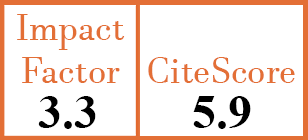Full Papers
Adherence to medication during pregnancy in systemic autoimmune diseases: results from a prospective study
D. Zucchi1, F. Racca2, L. Carli3, E. Elefante4, S. Gori5, C. Tani6, M. Mosca7
- Rheumatology Unit, Department of Clinical and Experimental Medicine, University of Pisa, and Department of Medical Biotechnologies, University of Siena, Italy.
- Rheumatology Unit, Department of Clinical and Experimental Medicine, University of Pisa, Italy.
- Rheumatology Unit, Department of Clinical and Experimental Medicine, University of Pisa, Italy.
- Rheumatology Unit, Department of Clinical and Experimental Medicine, University of Pisa, Italy.
- Rheumatology Unit, Department of Clinical and Experimental Medicine, University of Pisa, Italy.
- Rheumatology Unit, Department of Clinical and Experimental Medicine, University of Pisa, Italy. chiara.tani@for.unipi.it
- Rheumatology Unit, Department of Clinical and Experimental Medicine, University of Pisa, Italy.
CER16981
2024 Vol.42, N°3
PI 0666, PF 0670
Full Papers
Free to view
(click on article PDF icon to read the article)
PMID: 37812486 [PubMed]
Received: 07/07/2023
Accepted : 18/09/2023
In Press: 05/10/2023
Published: 27/03/2024
Abstract
OBJECTIVES:
To evaluate adherence to medication in patients with systemic autoimmune diseases (SAD), comparing pregnant and non-pregnant women.
METHODS:
200 patients with SAD were consecutively enrolled, 100 pregnant and 100 non-pregnant women. Each patient completed the 8-item Morisky Medication Adherence Scale (MMAS-8), one copy for hydroxychloroquine (HCQ) and one for other treatments for rheumatic disease, and Hospital Anxiety and Depression Scale (HADS).
RESULTS:
No significant differences were found in ongoing therapies between pregnant and non-pregnant women. 148 patients (74.0%) were taking HCQ and 160 (80.0%) other therapies for rheumatic disease. The mean MMAS-8 score was >6 in all groups indicating a good adherence, on average. The rate of patients with good medication adherence was higher in pregnant patients (73.9% vs. 63.3% and 76.5% vs. 64.5%, for HCQ and other therapies, respectively) although this difference was not statistically significant. Eight patients had very poor medical adherence, and all were non-pregnant women. Anxiety (15% of patients) was associated to low medication adherence for drugs other than HCQ (p=0.02), while depression (4% of patients) did not seem to have an impact on adherence.
CONCLUSIONS:
In our cohort we recorded a good adherence to prescribed medication, although adequate adherence was not achieved in about 30% of patients, confirming that non-adherence is an important issue in SAD. It is difficult to define a profile of patients at risk of poor adherence, but it appears important to implement communication and adherence monitoring strategies since strict monitoring also during pregnancy could improve medical adherence.


